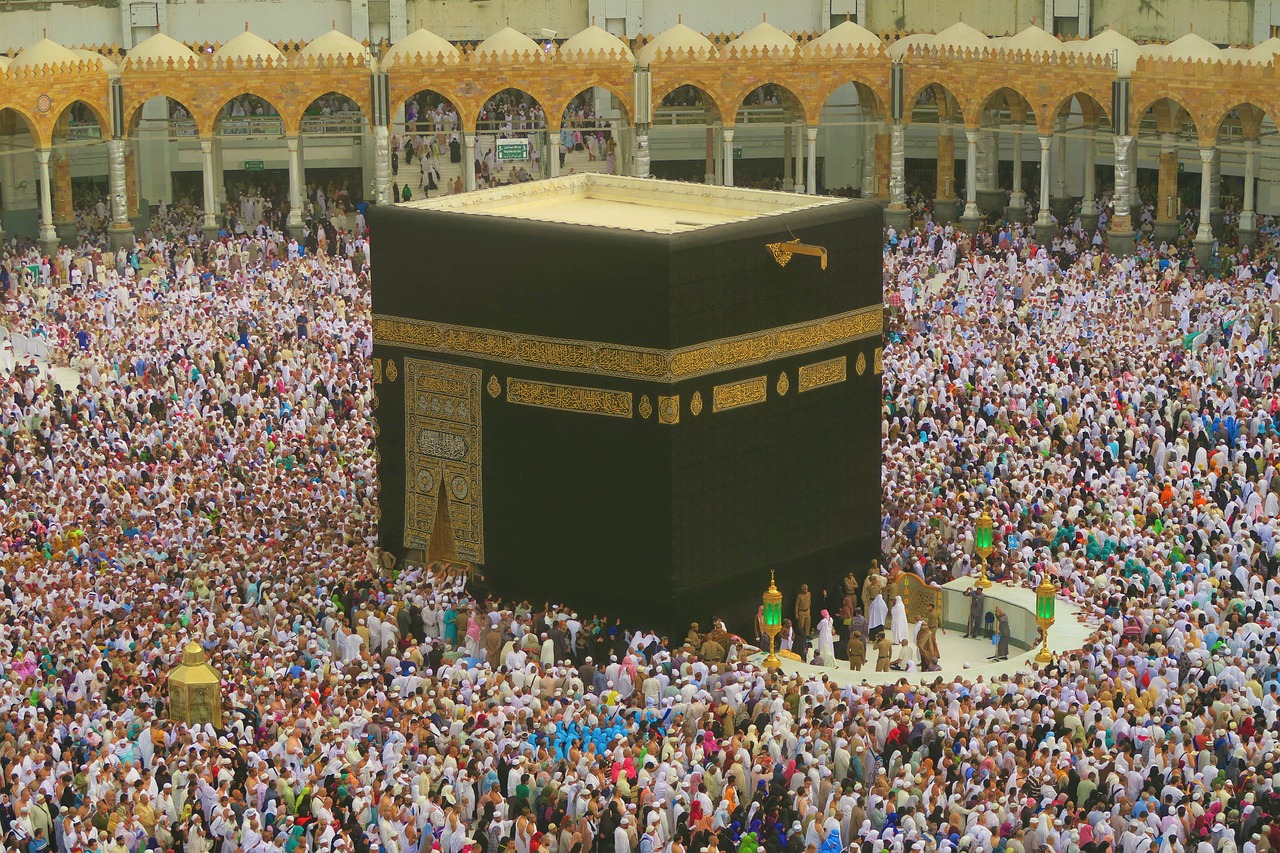One of the holiest shrines in the world is the Kaaba. It’s an Arabic word meaning cube in English. Every year, the Kaaba is visited by millions of people during the seasons of Hajj and Umrah. This blog will delve deeper into the history of the Kaaba, what is inside it, and other interesting information.
The Kaaba: House Of Allah
In Islam, the Kaaba is known as the house of Allah. Situated in the center of Al Haram, it is covered in a black silk cloth called the Kiswa. The Kiswa has embroidery of Quranic verses woven with gold and silver threads.
Every year, on the 9th of Dhul Hijjah, a new Kiswa is placed on the Kaaba, but last year, the date was changed to the 1st of Muharram. There is a semi-circle outside of Kaaba called Hajr Ismail. Whoever prays inside this circle is believed to receive the same blessings as praying inside the Kaaba.
The History Of Kaaba
The Kaaba was built by Ibrahim AS and his son Ismail AS. Later, in 608 CE (Common Era), the Quraysh tribe that ruled Makkah rebuilt it and changed some things. An example is the door raised above ground to protect the Kaaba from floods and intruders. Like this, many other changes have also been made to the Kaaba. The most recent one was in 1996 to strengthen its foundation.
The Inside Of Kabba
The inside of Kaaba is just as mesmerizing as the outside. The Kaaba’s main door, the Bab ur-Rahman (the door of mercy), is made of pure solid gold.
Three wooden columns are supporting the Kaaba ceiling. Several lamps are suspended from a pillar. Many Muslim kings and dignitaries gifted these lamps across time to decorate the Kaaba. There is a little white space in the opposite direction of the first pillar from the left. Some sources say this is where our Prophet Muhammad PBUH prayed.
There is a white storage cupboard situated after the first wooden column. This cupboard stores the ‘oud oil’ and other luxurious Arabic fragrances that are applied to the walls of the Kaaba after it is washed with Zamzam water and rose water. The floor of the Kaaba is made of white marble.
Another door inside the Kaaba, Bab e Tauba (Door of Repentance), also leads to an enclosed staircase made of aluminum. This staircase gives way to a hatch, a rectangular structure with no windows but just a door leading to the Kaaba’s roof. When the Quraysh rebuilt the Kaaba, they closed this door and added a roof.
The ceiling of the Kaaba is covered with a green cloth, and there are eight stones with Arabic engravings on them.

Hajr e Aswad
On the eastern wall of the Kaaba, there is a black stone. This Black Stone is also called Hajr e Aswad and has immense importance in the history of Islam and the pilgrimages. Apparently, this stone was with Adam AS when he came to earth. However, according to the most commonly accepted and authentic narration, this stone was brought to Ibrahim AS during the construction of the Kaaba.
Despite both narrations, one thing is clear: Hajr e Aswad is part of Jannah, as Prophet PBUH has stated in various hadiths. Moreover, the Prophet Muhammad PBUH also said that when Hajr e Aswad descended from heaven, it was whiter than milk, but the sins of the sons of Adam made it black, i.e., because the Muslims touched this stone during the pilgrimages.


Subhanallah
Today win my heart